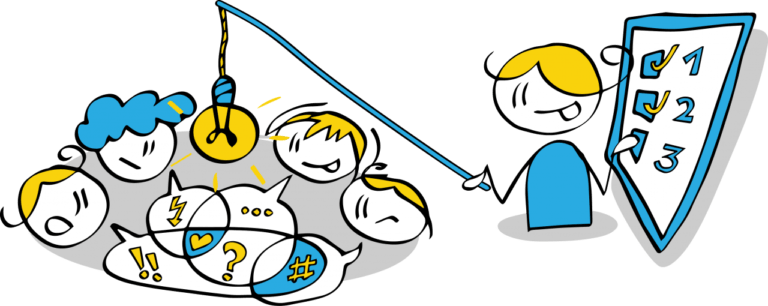My experience with facilitation and community building, by Domča
Organizing meetings for me has been more difficult than I expected. I’m trying to build a community of leaders and I find it really important to have these meetings as meaningful and valuable as possible. That’s why I keep thinking of what the meeting should look like, when to organize it and what tools to use. As I am in the process of building a community and doing one-on-one meetings, I noticed a higher interest from people to join these gatherings, which brings me to the problem of how to integrate newcomers to existing groups. To solve this, I’m thinking about creating new groups.
Before each meeting I ask myself:
- how the meeting will run, where it is going to take place and what should be prepared
- how to integrate new members into groups (how much time should I allocate for newcomers without breaking group dynamics and the flow of the meeting)
- how to set our rules/the rules of the groups
- how to make the meeting interactive
During the meeting I am:
- facilitating/leading the discussion/work of all those present – trying to integrate all members
- listening actively
- checking the time and guiding the debate to keep it relevant and on the spot
The framework of the meeting:
- starts with the introductory part, where I’m sharing some technicalities (incl. available time) and inquiring about any issues needed to be discussed on the spot (any requests from the participants)
- During introduction we need to set the goals of the meeting
- Moving on to the topics of the meeting and summarizing the conclusions of the last one (with the help of the participants who talk about what they remember from the previous gathering)
- Dividing the participants into groups based on a specific issue/question that they need to solve together (because of group dynamics)
- Making the meeting interactive (to keep up attention) with different tools, e.g. flipchart, postids, DIXIT cards
- Review the tasks and identifying the outputs – what has been learned
- What’s next? It’s important to draw some conclusions and further steps, incl. the date of the next meeting
After the meeting I am:
- creating a log of the meeting and sending them to the participants (alternatively can be done by one of them)
- creating a new “event/happening” online and sending them to the participants’ calendar
- continuing with the one-on-one meetings*
* We need to continue with the individual meetings in order to follow the group’s progress, their needs and future direction. It requires time and plenty of work with the group, but at the end it pays off with stronger support and relations among group members.
Tips:
- If you want to create a community, you need to make people feel involved and have ownership over the group. You can give them tasks or they can choose some themselves based on their personal preference.
- Check the available resources in the participating organizations and the participants themselves – what can they bring to support the group? You might find more than you think: from human resources (knowledge, skills) to available spaces and possible financial support.


